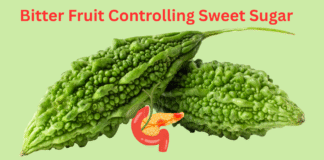Two parts of the eye that play a key role in vision control are the lens and retina. The lens is positioned behind the pupil and acts like the lens of a camera. It bends the light entering through pupil to focus it on the retina located at the back of eye. The retina contains light-detecting cells or photoreceptors that convert the light into a signal which is read by the brain as an image. At the center of retina there is a yellow, oval-shaped spot called the macula which is responsible for sharp and clear vision with fine details and colour. Retaining macular health is thus a critical factor for preserving normal vision.
Age-related macular degeneration is the principal reason of blindness in older people. Globally, around 288 million people are expected to have this problem in 2040. The major risk factors responsible for this degeneration include age, exposure to sunlight and poor nutrition. Prolonged exposure to sunlight damages the retina and the extent of damage is mostly determined by exposure time and wavelength. Short-wavelength blue light is more energetic and reactive and could cause severe photo-oxidative degeneration in the retina. Additionally, photo-oxidation may modify some amino acids of the lens that could lead to cataracts.
We consume a variety of carotenoid pigments and out of all the carotenoids available in our diet, only two carotenoid compounds, lutein and zeaxanthin, are present in the retina. Lutein occupies the peripheral part of the macula while zeaxanthin is dominant in the center. Both of these pigments protect the retina from oxidative damage by absorbing blue visible light (400-500 nm). Another important characteristic of these macular pigments is to inhibit aberration and optimize contrast sensitivity. When the intensity of light is either too high or too low and it becomes difficult for the eye to discriminate, the pigments work as filters to reduce glare, light scattering and enhance vision by increasing the contrast between the object and the background. Studies have shown that people suffering from age-related macular degeneration have lower pigment concentration in the macula and in serum from dietary sources and the inclusion of lutein and zeaxanthin in the diet reduces the risk of retinal damage. Therefore, supplementation of the diet with lutein and zeaxanthin is recommended for the prevention of macular degeneration. Green vegetables like kale, spinach, broccoli and cabbage are rich sources of lutein and zeaxanthin. Regular consumption of spinach, kale, and cabbage has been shown to provide substantial protection against the onset of macular damage and blindness.
For further reading
- Lutein and Zeaxanthin and Their Roles in Age-Related Macular Degeneration—Neurodegenerative Disease
- Lutein and Zeaxanthin Dietary Supplements Raise Macular Pigment Density and Serum Concentrations of these Carotenoids in Humans
- The Effect of Lutein/Zeaxanthin Intake on Human Macular Pigment Optical Density: A Systematic Review and Meta-Analysis




